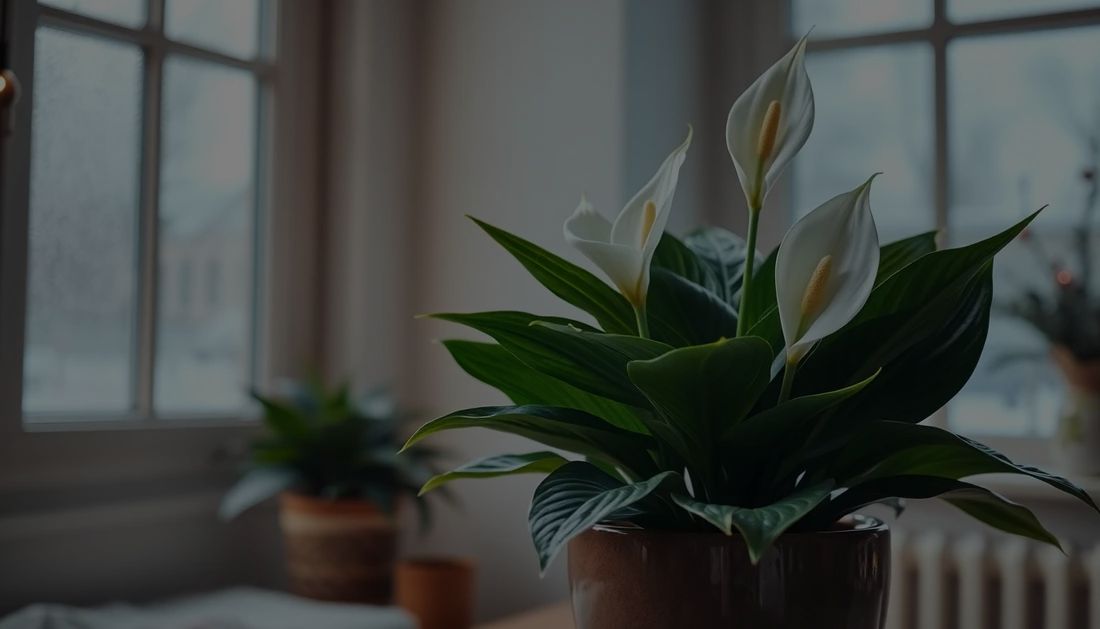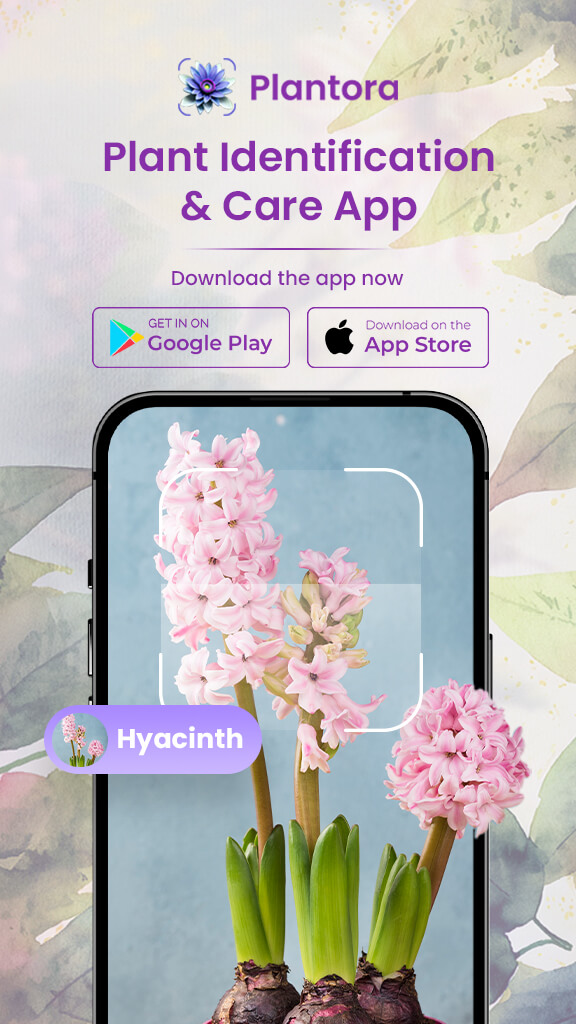
One of the most common indoor flowering plants is the Peace Lily plant (Spathiphyllum), which is prized for both its air-purifying properties and its exquisite white flowers. Because it can survive in low light, takes little maintenance, and even wilts to indicate when it needs water, this plant is ideal for beginners. The Peace Lily plant is a great option if you’re searching for a lovely, low-maintenance indoor plant.
The Peace Lily plant, a member of the Araceae family and native to Central and South American tropical rainforests, is frequently seen growing on the forest floor, where it benefits from the high humidity and filtered light. It is one of the most tolerant plants for first-time gardeners because it can thrive in a variety of indoor settings. In this blog, we’ll cover everything about peace lily care and how you can grow the peace lily plant at home.
What Is The Peace Lily Plant?

The Peace Lily, scientifically known as Spathiphyllum, features glossy, dark green leaves and striking white flowers, known as spathes, which resemble calla lilies. These spathes are actually modified leaves that surround the plant’s actual flowers, which are small and clustered on a spike called a spadix. The plant has a graceful, tropical appearance that makes it an attractive addition to homes and offices alike.
Despite its name, the Peace Lily is not a true lily. True lilies (such as Asiatic and Easter lilies) belong to the Liliaceae family and are far more toxic to pets. Peace Lilies, however, belong to the Araceae family and are only mildly toxic when ingested.
Benefits Of The Peace Lily Plant
- Air-purification: The power of peace lilies to enhance indoor air quality is well known. They can eliminate air pollutants like formaldehyde, benzene, carbon monoxide, xylene, and ammonia, according to NASA’s Clean Air Study. Because of this, these air-purifying plants are especially useful in settings like homes and offices where air circulation may be restricted.
- Aesthetic Appeal: Their broad, thick green leaves offer a touch of elegance to any indoor environment by striking a vivid contrast with their exquisite white blossoms. The Peace Lily adds beauty to its surroundings whether it is on a desk, a bookshelf, or in a decorative pot on the floor. Moreover, these feng shui plants also bring balance and harmony.
- Low-maintenance: The Peace Lily plant’s adaptability to many environments is one of its greatest benefits. It is a great option for people with hectic schedules or little plant care knowledge because peace lily care is easy and it doesn’t need frequent watering or direct sunlight.
Peace Lily Care

Water
The Peace Lily plant is well-known for withering to indicate when it needs water. When the top inch of soil feels dry to the touch, it is time to water the plant. It is advised to use room-temperature, filtered water because tap water that contains chlorine and fluoride can result in dark leaf tips. A typical error that can result in root rot is overwatering. For better peace lily care make sure the plant doesn’t sit in water and that the extra water drains appropriately. Because it grows more slowly in the winter, the plant needs less water.
Light
Like their natural habitat in rainforests, peace lilies flourish in indirect, filtered light. Although they can withstand low light levels, this could lessen how frequently they bloom. Their leaves may burn and develop brown or yellow areas if exposed to excessive amounts of direct sunshine. The plant may provide more flowers if it is cultivated in stronger light, but make sure the light is still diffused to avoid damaging the leaves for better peace lily care.
Soil
Peace Lilies thrive in a potting mix that drains well and contains peat, which keeps moisture in the soil without causing waterlogging. To prevent too much water from building up, the peace lily plant should be kept in a pot with drainage holes. Every one to two years, repotting helps replenish the soil with fresh nutrients. Moving the plant to a slightly bigger pot will promote further development if it gets root-bound.
Temperature & Humidity
Temperatures between 65 and 80°F (18 and 27°C) are ideal for peace lily growth. Stress and leaf damage can result from exposure to heating vents, air conditioners, or cold gusts. These tropical plants prefer high humidity, so spraying them occasionally can help keep moisture levels stable. For better peace lily care, use a humidifier or place it on a pebble tray that has water in it.
Fertilizing
Regular feeding during the growing season is beneficial for peace lilies. Every six to eight weeks, apply a balanced liquid fertilizer (such as 10-10-10 or 20-20-20) to encourage flowering and maintain healthy foliage. On the other hand, over-fertilization may cause salt accumulation, which could harm the plant. Periodically flushing the soil with water aids in the removal of accumulated salts.
Similar read- How To Fertilize Indoor Plants?
Propagation & Repotting
When repotted, peace lilies can be propagated by splitting the plant. Replant the root clusters in new soil after carefully separating them. Before each division is put in a new pot, it should have several leaves and a robust root system. This technique guarantees that new Peace Lily plants will continue to grow.
Repotting the plant every one to two years keeps it from becoming root-bound and helps to replenish the soil. Make sure the new pot you choose has a diameter that is one to two inches greater than the old one. When repotting, using fresh soil introduces new nutrients that promote growth.
Common Problems With The Peace Lily Plant
- Yellow Leaves – Poor drainage or excessive watering is frequently indicated by yellowing foliage. Make sure the pot has enough drainage and let the top inch of soil dry before watering it again. As a natural component of the plant’s growth cycle, older leaves may eventually become yellow.
- Brown Leaves – Chlorine or fluoride in tap water frequently causes leaves to turn brown. Browning can be avoided by using rainwater, distilled water, or filtered water. Brown tips can also result from low humidity levels, therefore using a humidifier or misting to increase humidity may be helpful.
- Drooping Leaves – Drooping leaves may indicate root disease or underwatering. Water the plant well and give it time to recover if the soil is dry. To avoid root rot, allow the soil to dry out before watering again if it is excessively damp.
- No Flowers – Insufficient nutrients or low light levels might prevent flowers from blooming. Blooming can be promoted by moving the plant to a slightly brighter spot and fertilizing it during the growing season. The likelihood of seeing the plant’s distinctive white spathes will rise if you maintain it in an ideal setting.
- Toxicity – Although peace lilies are lovely houseplants, they are not human and pet-friendly plants. This plant contain calcium oxalate crystals that, if consumed, can irritate the skin. They should be kept out of children’s and pets’ reach. Drooling, stomach pain, and moderate mouth irritation are possible side effects if consumed. To help avoid unintentional irritation, wash your hands after handling the plant.
Conclusion
Because of its versatility, low maintenance requirements, and air-purifying qualities, the peace lily is among the greatest houseplants for novices. Its exquisite white blossoms and lush green leaves are year-round when the proper amount of light, water, and humidity is provided. For any indoor garden, the Peace Lily is a rewarding choice, whether you want to enhance the air quality or the beauty of your home. This plant will flourish and add peace to your area for many years to come with a little attention.
Raghav is a talented content writer with a passion to create informative and interesting articles. With a degree in English Literature, Raghav possesses an inquisitive mind and a thirst for learning. Raghav is a fact enthusiast who loves to unearth fascinating facts from a wide range of subjects. He firmly believes that learning is a lifelong journey and he is constantly seeking opportunities to increase his knowledge and discover new facts. So make sure to check out Raghav’s work for a wonderful reading.





